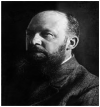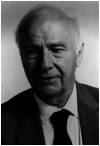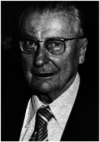Five thousand years of minimal access surgery: 1850 to 1990: Technological developments
- PMID: 33135950
- PMCID: PMC8173353
- DOI: 10.1177/0141076820967918
Five thousand years of minimal access surgery: 1850 to 1990: Technological developments
Abstract
This is the second of a three-part series that charts the history of minimal access surgery from antiquity to current times. Although rapid developments in laparoscopic and robotic surgery have transformed surgical care over the last 30 years, our predecessors made significant advances in their time which set the principles for modern practice. Part I of this series described how ancient medical practitioners developed simple instruments, from metal or wood, for viewing body cavities. Improvements in the use of metal, glass and lighting allowed for inspection of deeper parts of the body. This second part of the series will show how advances in electrical technology allowed the development of improved lighting for endoscopy and laparoscopy along with the use of electrocautery for a wide range of therapeutic procedures.
Keywords: History of medicine; general surgery; surgery.
Figures










Similar articles
-
Five thousand years of minimal access surgery: 1990-present: organisational issues and the rise of the robots.J R Soc Med. 2021 Feb;114(2):69-76. doi: 10.1177/0141076820967907. Epub 2020 Nov 2. J R Soc Med. 2021. PMID: 33135951 Free PMC article.
-
Five thousand years of minimal access surgery: 3000BC to 1850: early instruments for viewing body cavities.J R Soc Med. 2020 Dec;113(12):491-496. doi: 10.1177/0141076820967913. Epub 2020 Nov 2. J R Soc Med. 2020. PMID: 33135953 Free PMC article. Review.
-
A short history of robotic surgery.Ann R Coll Surg Engl. 2018 May;100(6_sup):5-7. doi: 10.1308/rcsann.supp1.5. Ann R Coll Surg Engl. 2018. PMID: 29717892 Free PMC article. Review.
-
History of endoscopic and laparoscopic surgery.World J Surg. 2001 Jul;25(7):967-8. doi: 10.1007/s00268-001-0049-9. World J Surg. 2001. PMID: 11572039 No abstract available.
-
A brief history of endoscopy, laparoscopy, and laparoscopic surgery.J Laparoendosc Adv Surg Tech A. 1997 Dec;7(6):369-73. doi: 10.1089/lap.1997.7.369. J Laparoendosc Adv Surg Tech A. 1997. PMID: 9449087
Cited by
-
Trends and perspectives in minimally invasive surgery in oral and maxillofacial surgery.J Korean Assoc Oral Maxillofac Surg. 2024 Dec 31;50(6):307-308. doi: 10.5125/jkaoms.2024.50.6.307. J Korean Assoc Oral Maxillofac Surg. 2024. PMID: 39743327 Free PMC article. No abstract available.
-
Evolution of uniportal video-assisted thoracoscopic surgery: optimization and advancements.J Thorac Dis. 2024 Aug 31;16(8):4839-4843. doi: 10.21037/jtd-24-647. Epub 2024 Aug 16. J Thorac Dis. 2024. PMID: 39268107 Free PMC article. No abstract available.
-
Robot Assisted Laparoscopic Surgery in Gynaecology: An Evolving Assistive Technology.Surg Innov. 2024 Jun;31(3):324-330. doi: 10.1177/15533506241238038. Epub 2024 Mar 6. Surg Innov. 2024. PMID: 38446503 Free PMC article. Review.
-
Five thousand years of minimal access surgery: 1990-present: organisational issues and the rise of the robots.J R Soc Med. 2021 Feb;114(2):69-76. doi: 10.1177/0141076820967907. Epub 2020 Nov 2. J R Soc Med. 2021. PMID: 33135951 Free PMC article.
-
Purse-string suture with nylon cords and metal clips for the treatment of duodenal fistulae under the endoscope: a case report.Front Med (Lausanne). 2024 Jun 14;11:1403218. doi: 10.3389/fmed.2024.1403218. eCollection 2024. Front Med (Lausanne). 2024. PMID: 38947235 Free PMC article.
References
-
- European Museum of Urology. Electrohydraulic Lithotripsy. http://history.uroweb.org/history-of-urology/early-urological-interventi....
-
- Meyer W. On Cystoscopy and the New Cystoscope of Nitze and Leiter. With a Demonstration of the Same (Reprinted from the New York Medical Journal, April 21 1888). London: Forgotten Books, 2018.
-
- Newell O. The endoscopic instruments of Joseph Leiter of Vienna and the present development of endoscopy. Boston Med J 1887; 117: 528–530.
-
- Reuter A, Reuter H, Engel R. History of Endoscopy. Vol I–IV 1999; Vol I, Stuttgart, Germany: Max Nitze Museum.
Publication types
MeSH terms
LinkOut - more resources
Full Text Sources

